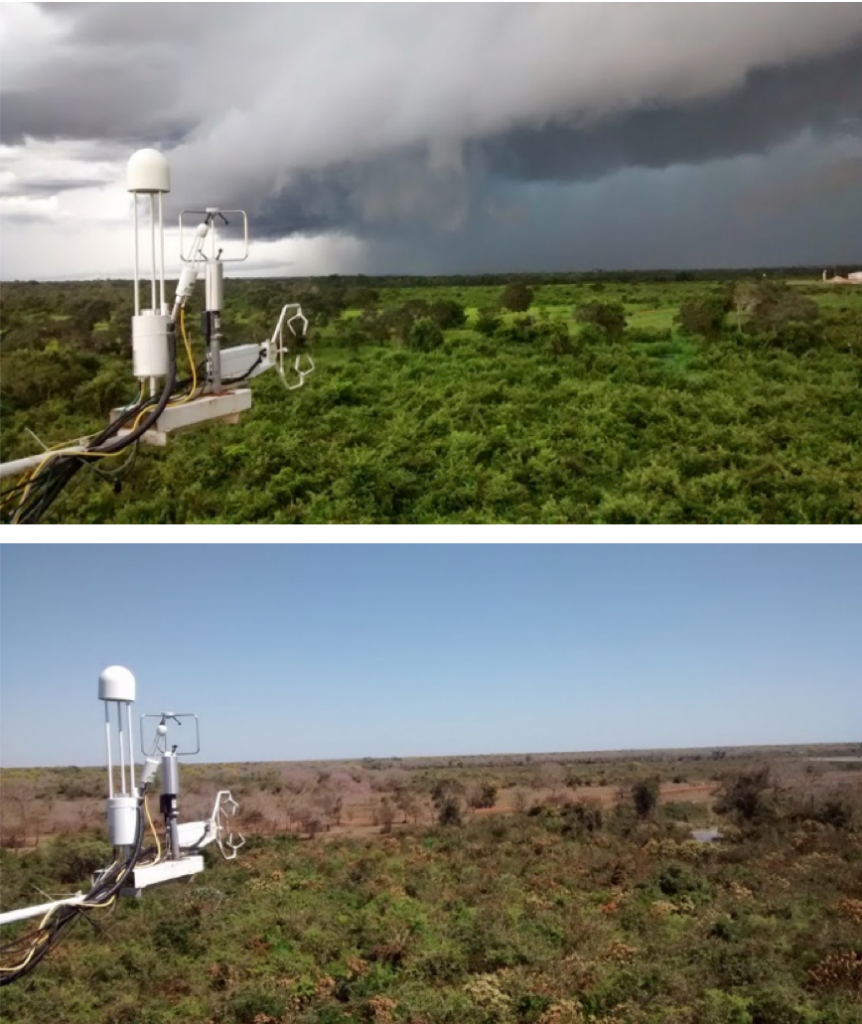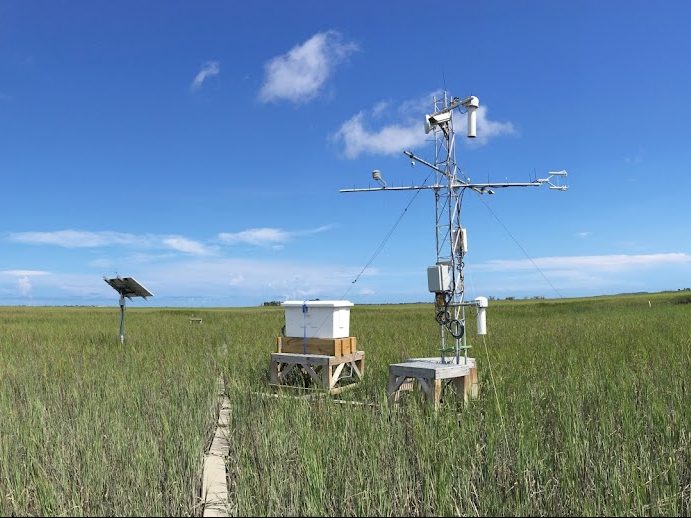The Pantanal is located in central South America, and is the largest continuous wetland in the world, covering a total flooding area of approximately 160,000 km2. Pantanal hydrology is highly seasonal, with peak flooding typically occurring in March in the northern part of the Pantanal and end of July in the southern part of the Pantanal. This north-south flood level gradient creates a complex mosaic of habitats such as forests, seasonally flooded pasture fields, and open water environments such as lakes and river channels. Thirty percent of the earth’s wetlands are in the tropics, so understanding how carbon flows occur in these ecosystems is critical. The long-term carbon balance of this ecosystem, and consequently methane (CH4) fluxes, is highly dependent on hydrological conditions, which may change under future climatic conditions and changing vegetation composition.
Faced with this scenario, we measured CH4 flux from January 2013 until July 2017 (http://dx.doi.org/10.1111/gcb.14615). The equipment was installed on a 20 m high tower within a national reserve managed by the Brazilian Social Service (SESC) in the northern part of the Pantanal (16,498 S, 56,412 W, 120 m altitude). The study site is seasonally flooded with pronounced rainy (November to April) and dry (May to October) periods. Flooding occurs from local rainfall and annual overbanking from the Cuiabá River. The main channel of the Cuiabá River is located approximately 2 km from the tower site, seasonally inundating the extensive local floodplain including the tower site (https://youtu.be/0sEnR6vUJY8). The local vegetation is typical of secondary forests in the region and is dominated by the pioneer tree species Combretum lanceolatum (Combretaceae) with an average height of 6 m.

Ground view of vegetation and flux tower during annual drought (left) and flooded (right) conditions. Photo: Higo Dalmagro
Season variations in carbon flux were strongly linked to changes in soil hydrology. Carbon dioxide (CO2) absorption increased at the beginning of the rainy season, but net CO2 uptake declined over time as prolonged flooding caused soil oxygen levels to decrease, and other processes such as leaf senescence, litter decomposition, and soil CO2 efflux to become more dominant. On the other hand, CH4 emissions increased immediately with flooding when the soil become anoxic. During the dry season, the flooded forest was a small net source of CO2 to the atmosphere and the CH4 efflux effectively ceased as the soil redox increased as water level declined and the soil and returned to oxic conditions. In general, the long-term carbon balance of these forests depends on rainfall patterns and the spatial and temporal extent of flooding that may change due to climate change and the anthropogenic degradation of this ecosystem. Further, it is important to note that the strong radiative forcing of CH4 emitted from the ecosystem primarily during the flooded phase resulted in the ecosystem acting as a net source of radiative forcing on an annual basis.

View from the top of the sensor tower of vegetation during the rainy (top) and dry (bottom) seasons. Photo: Higo Dalmagro
There are few continuous CH4 measurements in tropical wetlands in South America. Our research group “xômanoflux” is committed to finding out how tropical ecosystems affect and are affected by climate change. We are currently measuring the CO2 and CH4 fluxes in seasonally flooded pasture fields, which is another important vegetation type in the Pantanal. With these measurements, and those previously conducted in the seasonally flooded forest, we hope to improve our understanding of global change impacts on greenhouse gas fluxes and the carbon balance within the northern Pantanal of Brazil.
This post was authored by Higo J. Dalmagro, George L. Vourlitis and Mark S. Johnson for the AmeriFlux Year of Methane.
Work Cited
Dalmagro HJ, Zanella de Arruda PH, Vourlitis GL, Lathuillière MJ, de S. Nogueira J, Couto EG, Johnson MS. 2019. Radiative forcing of methane fluxes offsets net carbon dioxide uptake for a tropical flooded forest. Glob Chang Biol 25:1967–81.





No Comments
Be the first to start a conversation